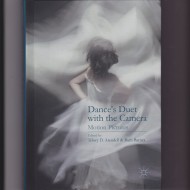
Rudolf Laban thought so; he found them in the kinesphere! “Snakes” are one of the seldom taught space harmony forms that Cate Deicher and I will be exploring in our “Advanced Space Harmony” workshop, December 3-4, in New York City.
Our aim in this workshop is to introduce new Choreutic forms and demonstrate how these can serve as a design source for movement. Unlike most of the familiar space harmony scales, snakes are not rhythmic circles. That is, they do not begin and end at the same point in the kinesphere. … Read More









